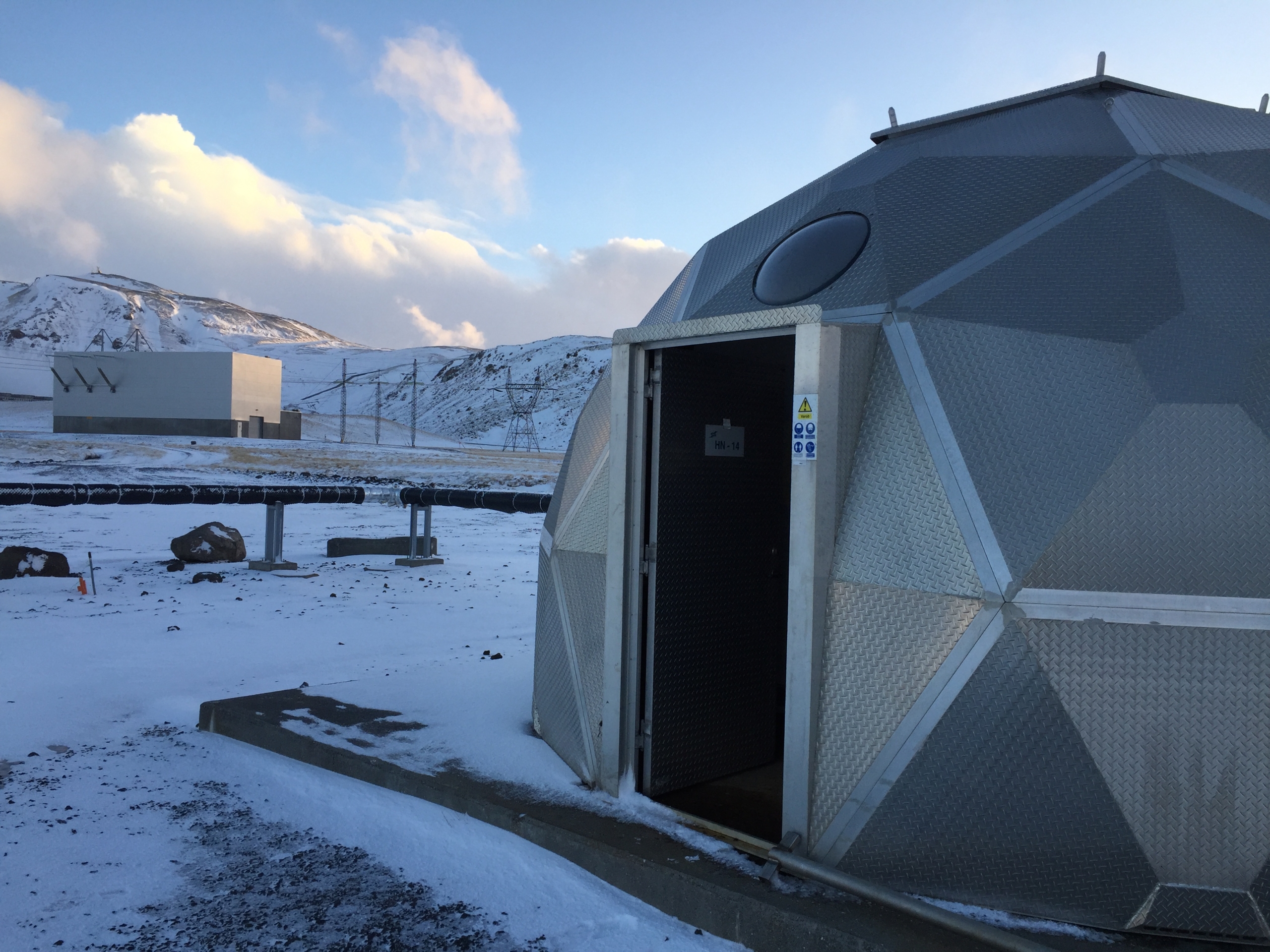In the middle of a lava field gently covered with snow stands a metallic structure reminiscent of an igloo. The dome, slightly larger than a family tent, hides an arrangement of metal tubes, levers and valves.
Do not let the humble appearances fool you. The plant operating in connection to the Hellisheiði Power Station is experimenting with technology that might end up playing a part in solving the climate crisis.
CarbFix, a collaborative research project between Reykjavik Energy and three universities, is ultimately quite simple. It involves capturing and storing carbon dioxide from the adjacent geothermal power plant, mixing it with water and injecting it into the soil.
We have been talking about carbon capture and storage (CCS) for years. A motley assortment of projects have been stashing away carbon dioxide released from energy production and industrial processes. The gas that causes the climate to warm has then been stored into the waning oil and gas fields or subsurface layers of the seabed.
However, CCS has not caught on, most of all due to its high cost. In new power plants, the technology has cost USD 50-100 per tonne of emissions, sometimes even more. Those criticising the method also worry that at least some of the carbon dioxide will slip back into the atmosphere and end up warming the climate over the years.
This is what makes CarbFix so revolutionary. Researchers in Iceland have noticed that injecting carbon dioxide mixed with water into basaltic rocks causes it to mineralise in a few years. The carbon is unlikely to be ever released back into the atmosphere from the rock.
This technique does not only appear safe, but also reasonably priced. According to the project, it is possible to store carbon in the basalt at the price of only USD 30 per tonne of emissions – in other words, with a fraction of the costs of traditional CCS. In fact, speaking at a climate seminar in Reykjavík, Research Professor Sigurður Reynir Gíslason of the University of Iceland presented that the price could be as low as USD 25 per tonne.
In must be noted, however, that the inexpensive price in Iceland is explained by the fact that the geothermal power plant makes is easy to capture carbon dioxide. If it had to be extracted from the emissions of a coal-fired power station, for instance, the price tag would be more substantial.
Nevertheless, if the technology works in the way praised by the Icelanders, it might enable capturing and storing significant amounts of emissions at a reasonable price. This could make it possible to cut emissions whose reduction would otherwise be very difficult or expensive. If we inject carbon released from the production of bioenergy into the ground, we might even reach negative emissions, which means being able to reduce the amount of carbon already released into the atmosphere.
Of course, this technology is not suited everywhere. Basaltic rock suitable for the purpose can be found on around one tenth of the continents. There is more potential in the ocean floor surrounding the continents.
The method also consumes a fairly large amount of water, 10-30 tonnes per each tonne of carbon dioxide. However, the technology is not picky when it comes to water quality: salty seawater will do, and water can also be recycled.
Turning carbon dioxide into stone may provide one significant piece in the large puzzle of solving the climate crisis. That is why it is worth paying close attention to what is going on at the feet of the mountains in Hellisheiði.
See a video filmed on location (in Finnish):

